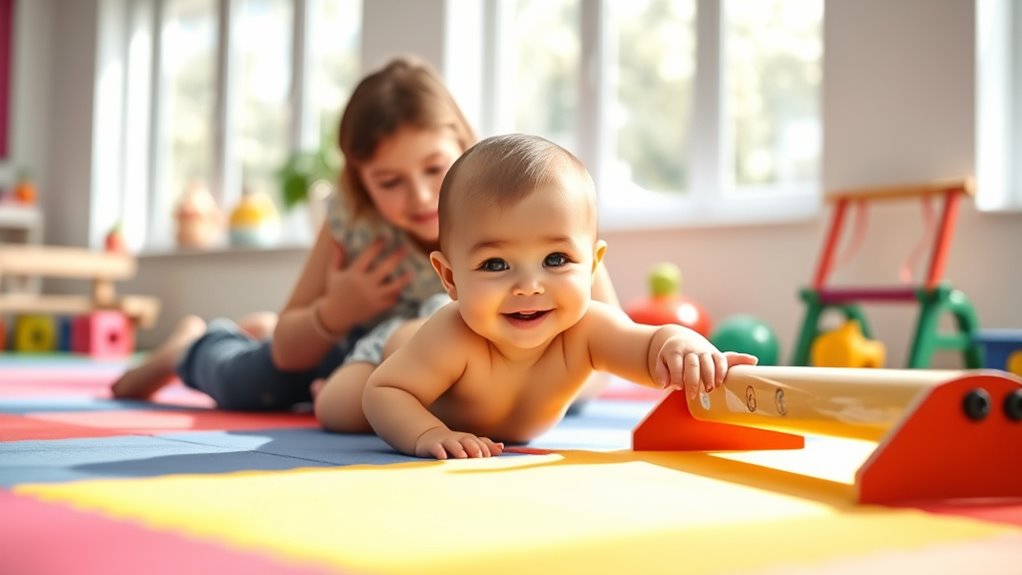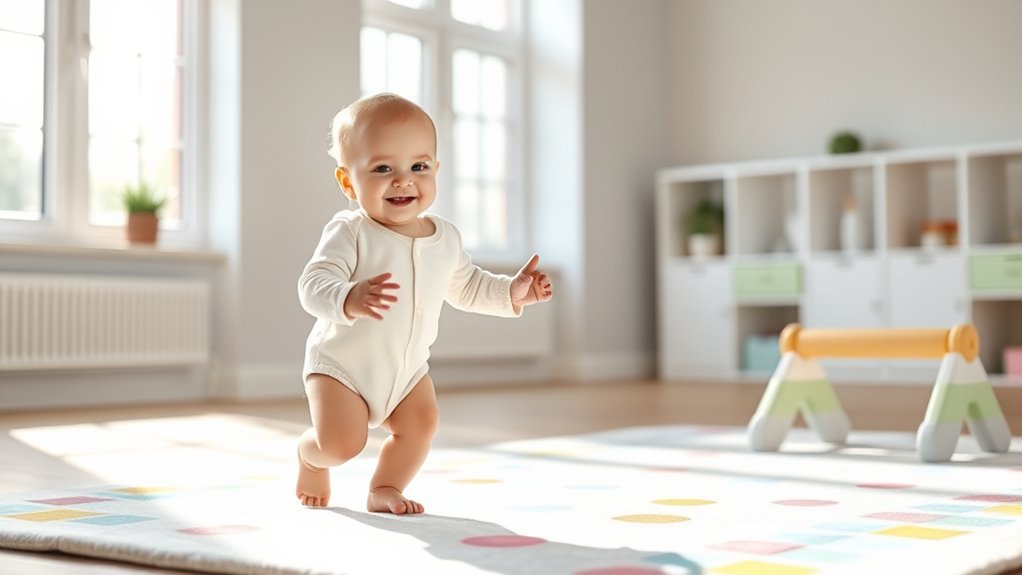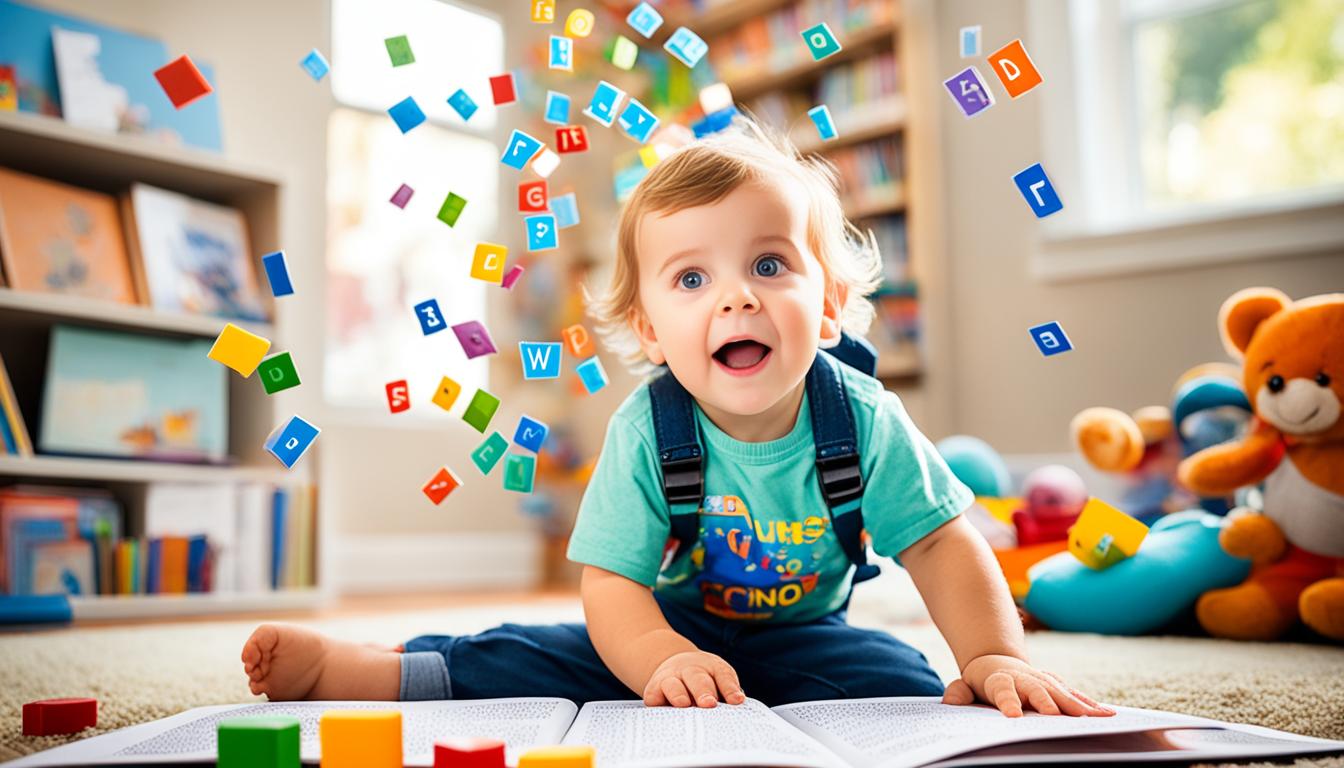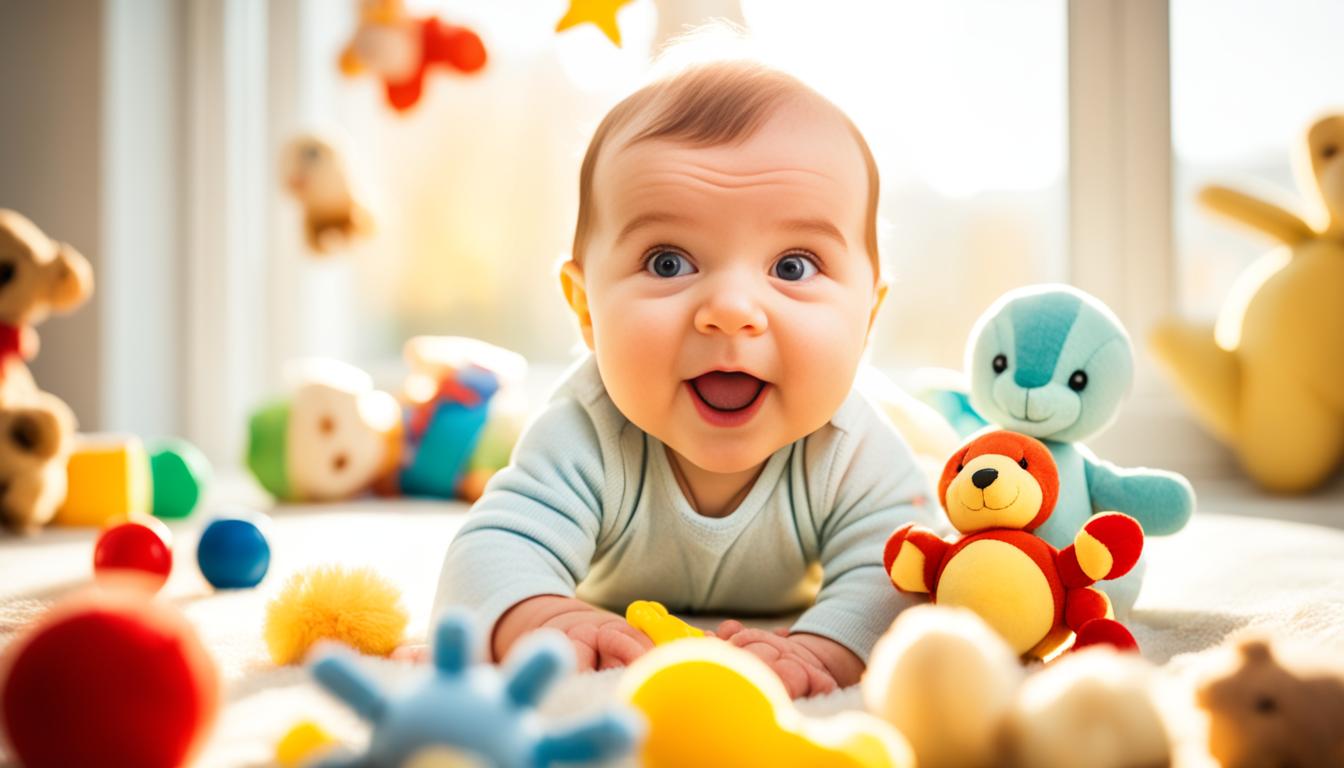To strengthen your baby through simple gymnastics exercises, start with tummy time to encourage lifting the head and strengthening shoulder muscles. Practice crawling to build core strength and coordination by encouraging your little one to move towards toys or yourself. Keep sessions short and engaging, using colorful toys and close supervision. Consistency is key, so incorporate these activities into daily routines and watch your baby develop essential motor skills. Keep going for more helpful tips to support your baby’s growth.
Key Takeaways
- Incorporate short tummy time sessions to strengthen neck and shoulder muscles.
- Practice crawling exercises to develop arm, leg, and core strength.
- Use engaging toys to motivate movement and exploration.
- Start routines with 3-5 minute activities, gradually increasing duration.
- Ensure close supervision and maintain a safe, interactive environment.

Have you ever wondered how early physical activity can benefit your baby? Engaging your little one in simple exercises like tummy time and crawling practice can do wonders for their development. These activities aren’t just fun; they build the foundation for strength, coordination, and motor skills. When you start with tummy time, you give your baby a chance to lift their head, strengthen neck muscles, and improve shoulder stability. It’s a critical step that helps them prepare for more advanced movements like rolling over, sitting, and eventually crawling. Plus, it encourages your baby to explore their environment, which boosts their curiosity and cognitive growth.
As your baby gets comfortable with tummy time, you can introduce crawling practice. This helps develop their arm, leg, and core muscles, which are essential for later stages of mobility. You might place a favorite toy just out of reach during tummy time to motivate them to reach and move toward it. This not only strengthens their muscles but also enhances their hand-eye coordination and problem-solving abilities. Over time, as your baby begins to push up on their hands and knees, they’re practicing the motions that will lead to crawling. This process might take days or weeks, but with patience and consistency, you’ll see steady progress.
Incorporating these exercises into your daily routine is straightforward. Start with short sessions—around three to five minutes—several times a day, gradually increasing as your baby gains strength and confidence. Remember, always supervise your little one closely during tummy time and crawling practice to ensure safety. You can make these activities engaging by lying down with them, using colorful toys, or talking to them as they work their muscles. These interactions not only motivate them but also foster bonding and communication.
Frequently Asked Questions
When Is the Best Age to Start Baby Gymnastics?
You might wonder when to start baby gymnastics, and the best time is usually around 3 to 6 months old. During this stage, early motor skills begin to develop, and your parent participation can make a big difference. Introducing simple exercises helps your little one build strength and coordination, fostering confidence. Just guarantee your baby is comfortable and always supervise closely to keep the experience safe and enjoyable.
Are There Any Safety Risks Involved in Baby Gymnastics?
Think of baby gymnastics like a tiny voyage across calm waters; it’s generally safe, but you need a good risk assessment first. While risks are minimal, they include falls or overstimulation. Always follow safety precautions such as supervising closely and choosing soft surfaces. By doing so, you create a safe environment that nurtures your little one’s strength and confidence, making every moment of their journey both fun and secure.
How Often Should My Baby Do These Exercises?
You should aim for exercise frequency that matches your baby’s developmental milestones, usually about 3 to 5 times a week. Keep sessions short, around 10-15 minutes, to prevent fatigue. Observe your baby’s cues and adjust accordingly. Consistency helps strengthen muscles and promotes growth, but always prioritize safety. Regular, gentle exercises support your little one’s development without overwhelming them.
Can Baby Gymnastics Help With Developmental Delays?
Think of baby gymnastics as planting seeds for growth. It can support motor skill development by encouraging movement and coordination, helping your little one reach milestones. Additionally, these exercises promote sensory integration, allowing them to process sensory information better. While not a cure for developmental delays, gentle, regular activity can boost confidence and progress, creating a strong foundation for future growth and learning.
What Equipment Is Necessary for Beginner Baby Gymnastics?
For beginner baby gymnastics, you don’t need much equipment—just a soft, padded surface like a mat to guarantee safety. Always provide parental supervision to prevent falls or injuries and check that all equipment is secure and in good condition. Keep the environment clutter-free, and use simple items like low cushions or toys to encourage movement safely. Prioritizing equipment safety helps your little one enjoy and benefit from these activities.
Conclusion
As you guide your little one through these gentle exercises, you’re planting seeds of strength and confidence that will blossom over time. Each movement is a small step on their journey, like a tiny leaf unfurling to catch the sunlight. Remember, your support is the gentle wind that helps them soar. With love and patience, you’re nurturing a future filled with endless possibilities—one playful stretch at a time.










